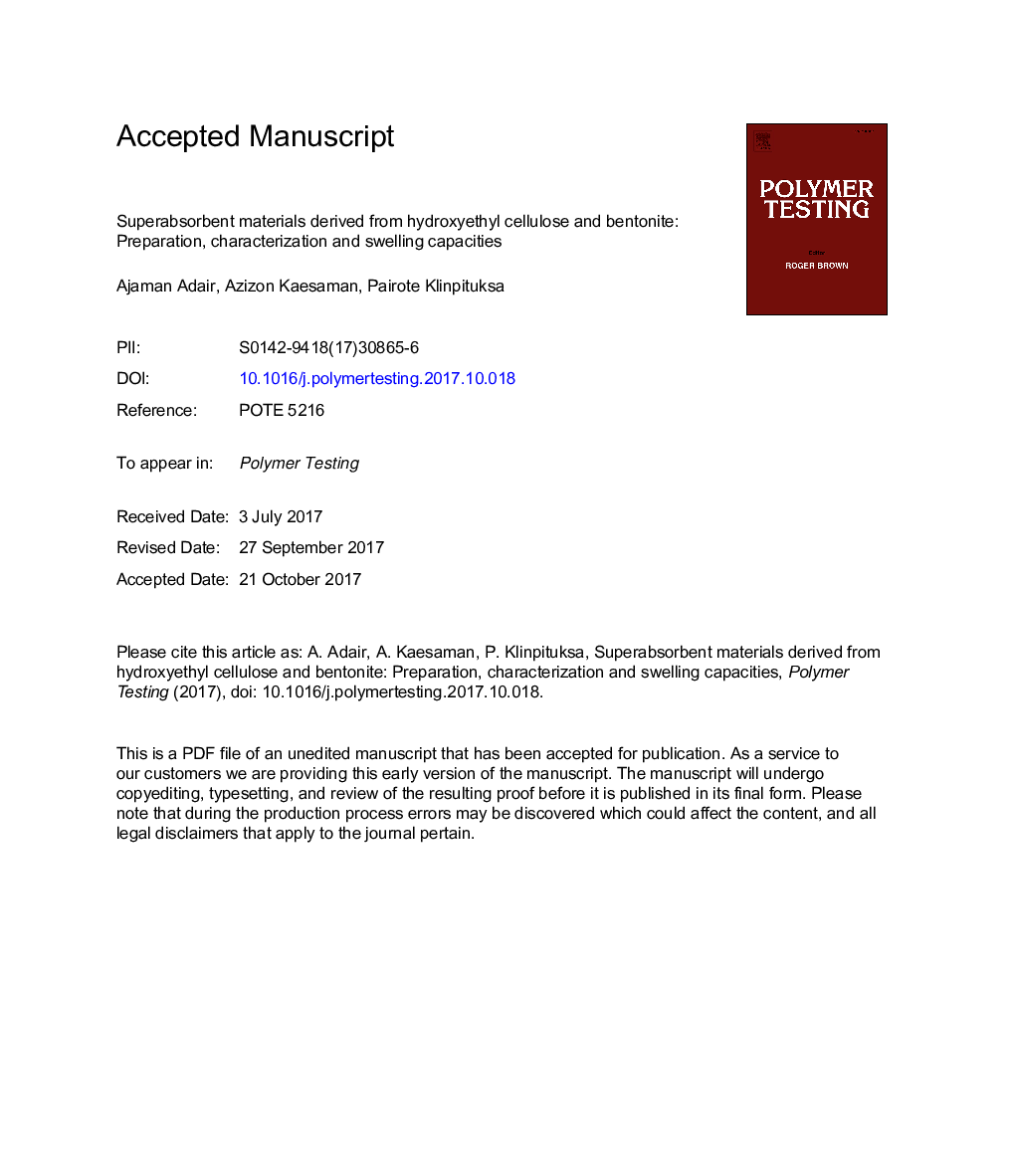| Article ID | Journal | Published Year | Pages | File Type |
|---|---|---|---|---|
| 7825595 | Polymer Testing | 2017 | 33 Pages |
Abstract
Superabsorbent polymers (SAPs) and composites (SAPCs) were prepared entirely by graft copolymerization of polyacrylamide (PAM) onto hydroxyethyl cellulose (HEC), using potassium persulfate (KPS) as an initiator, and N,Nâ²-methylenebisacrylamide (MBA) as a crosslinker, in an aqueous solution. The extent of grafting was evaluated from % grafting efficiency (%GE) for various HEC/AM ratios, and a near optimal ratio was determined. Influences of various preparation parameters, i.e., the ratio of HEC/AM, amount of initiator and crosslinker, reaction temperature and time, and amount of filler on water swelling capacity of SAPs and SAPCs were studied. An FT-IR determination confirmed that the PAM was successfully grafted onto the HEC backbone, by showing absorption bands of the HEC backbone and new absorption bands from the grafted copolymer. The swelling capacity of SAPs and SAPCs depended strongly on different parameters, and the maximum swelling capacity was over 426Â g/g and 538Â g/g for the SAPs and SAPCs, respectively.
Related Topics
Physical Sciences and Engineering
Chemistry
Organic Chemistry
Authors
Ajaman Adair, Azizon Kaesaman, Pairote Klinpituksa,
